Conserving our Furniture
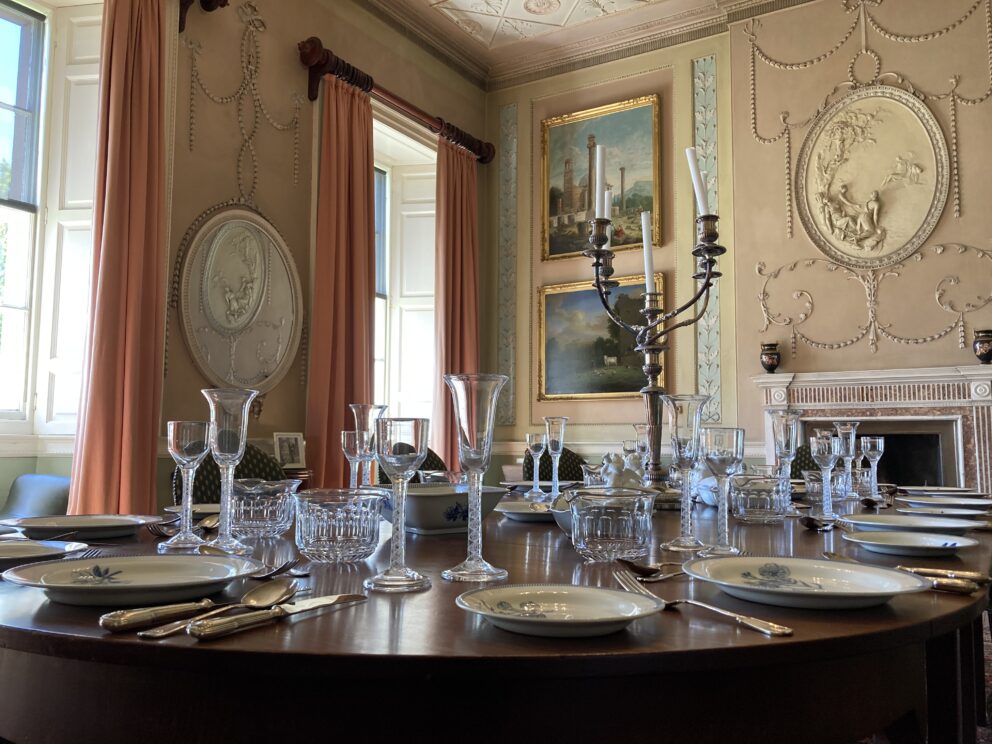
One of the real pleasures of winter is the quality of light – early sunsets, sun on frost, candlelight, firelight. At Paxton House, this quality is enhanced by the rich polish and patina on our furniture which glows in soft winter light. We have been involved in a programme of conservation through 2021/2 thanks to grant funding from Museums Galleries Scotland, The Pilgrim Trust, and The Leche Trust
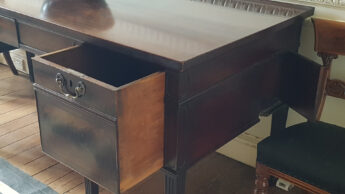 The Paxton House Trust is lucky to have responsibility for two Recognised collections of national importance: a collection of Georgian furniture from the workshops of Thomas Chippendale from the 1770s to 1791; and a collection of Regency furniture by George Trotter from the 1810s.
The Paxton House Trust is lucky to have responsibility for two Recognised collections of national importance: a collection of Georgian furniture from the workshops of Thomas Chippendale from the 1770s to 1791; and a collection of Regency furniture by George Trotter from the 1810s.
It was Ninian Home (1732 – 1795) who commissioned Thomas Chippendale to furnish his new interiors at Paxton House which had been left unfinished by his uncle Patrick. The cabinet maker of the moment was Thomas Chippendale, who had set up a workshop in London in the 1750s and who secured his influence with the publication of a book of his designs in 1754, titled The Gentleman and Cabinet Maker’s Director. These furniture designs in rococo, gothic and chinoiserie styles were much copied and established Thomas Chippendale as an innovator and supreme master designer whose name is still associated with the best Georgian furniture. Thomas Chippendale’s business, Chippendale, Haig & Co was continued by his son, also Thomas Chippendale, after the death of Thomas senior in 1779. Thomas Chippendale Junior continued in business until the 1820s.
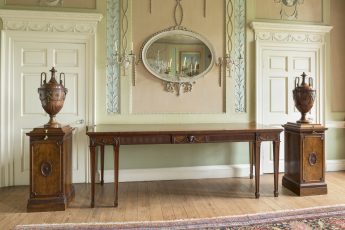
Thomas Chippendale’s Paxton Style
Two things mark out the Paxton collection. Firstly, we have in the Home Family archive, receipts and letters for the furnishing of Paxton House to show, if the quality didn’t already tell us, that our furniture is irrefutably made by Chippendale between 1774 and 1791. Secondly, the furniture at Paxton House has an elegant but understated style all its own which reflects the taste of Ninian Home and his wife Penelope, who wanted their furniture to be made “in a neat but not expensive manner”. Gone are the gilded flourishes of Chippendale’s earlier Rococo period, the furniture at Paxton is influenced by the neo-classical manner of architect Robert Adam’s interiors.
The best examples of the Chippendale Paxton style are perhaps the Paxton Secretaire, a large desk used by Ninian Home in the management of his far away Caribbean estates, and the bedroom presses which retain their original fittings. Each of these pieces has been carefully restored and repaired in 2022.
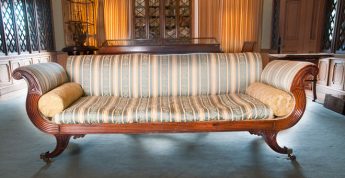
William Trotter’s largest commission
William Trotter’s career as a cabinet maker coincided with the development of Edinburgh’s Georgian New Town. Trotter quickly established himself as the favoured supplier of furniture to the Scottish aristocracy and set up shop in Prince’s Street in 1805. In 1813, George Home (1735-1820) and his ward, Nancy Stephens commissioned him to furnish Paxton’s new wing providing furniture for the Library and Picture Gallery. It was Trotter’s most significant country house commission. The Trotter furniture at Paxton shows all his characteristic precision with detailed carving and the addition of decorative scrolls. His favoured wood is rosewood, a dark hardwood with a distinctive ‘rose’ scent when cut, which was mostly imported from Brazil in the Regency period, where it had been cut down by enslaved people clearing land for plantations.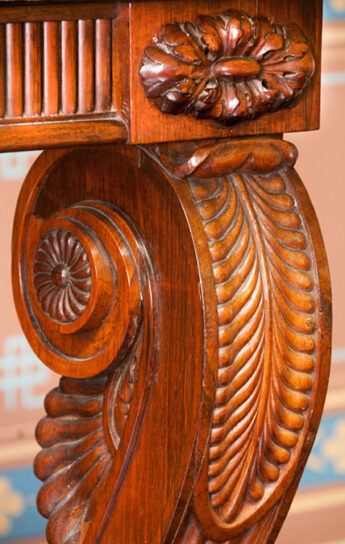
At Paxton, we can trace 40 pieces made by William Trotter which directly correspond with the bills found in the Home Family Archive; of these, 30 are still in the house. This makes it the largest publicly accessible collection of the work of Scotland’s most distinctive and important cabinet maker.


![]()
Look out for a series of posts on our furniture conservation programme step-by-step .